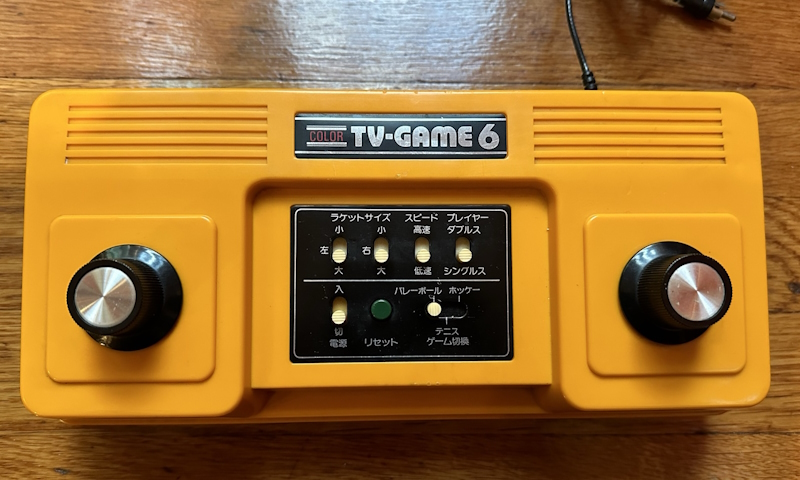-
First is the Worst: Nintendo's Color TV Game 6 & 15
If you told Yamauchi Fusajiro that the little playing card business he had just started would one day sell video game consoles, he would have no idea what you were talking about. It was 1889, after all. But nevertheless, that’s exactly what happened, and today everyone knows the name Nintendo. But what you might not know? A particular pair of Pong clones from the spunky little Kyoto folks– their first consoles– are the worst Pong clones of the bunch. Why? And did they fix it?
-
What Does It Take To Play Truxton?
Many people believe video games, as a class, to be bad. But while goodness or badness is subjective, sometimes there is a video game that is good. Who determines objective goodness? I do. And this intro is not objectively good, so let’s it get it over with: behold, Toaplan’s masterpiece Truxton. An excellent space shooter from Toaplan and the brainchild of programmer-composer Masahiro Yuge; what does the hardware contribute? And does everyone agree with me that it’s good? Even random MSX developers?
-
How can Space Invaders Invade Your Space? The Epoch TV Vader!
Space Invaders is an epochal moment in video games. Arguably the first true megahit, it’s credited with starting the shoot ‘em up genre, making Japan obsessed with video games, popularizing the Atari 2600, and even making its way into Unicode: 👾. And an epochal moment deserves an Epoch of its own. Let’s go back into the well of single-game consoles.
-
Yes, You Can Use Lightguns on LCDs-- Sometimes
Old-school cathode ray tube TVs have become de rigeur in the retro scene as the true way to experience retro games “the way they were designed”. But there’s a lot of benefits to modern TVs; they’re lighter, usually bigger, and there are a lot of upscalers that give really good pictures. But then you give up peripherals like light guns, that are permanently tied to the television’s timing. Or are they?
-
Arrangeball Gaiden: A Little Variation with Bandai's Arrange Fever
So I’m doing some work to try to bring an old Arrangeball machine back to its former glory. But let’s say you don’t want to go through all that, or just don’t have room for such a big device. Well, of course, there are other ways to get your arrange fix– one of which is a classic LCD game. Is it a Game and Watch? No. It’s not a watch.
-
My Dearest Data East: Why? Gate of Doom/Dark Seal!
I like it when hardware is a little weird. Give me two Master System VDPs overlaid on top of each other, a Neo Geo MVS with no cartridge, or even a modern device that outputs video via a cartridge port. But sometimes companies make decisions on their hardware that I just don’t understand. I’m not an expect, and I’m sure they have good reasons. Fun fact: This is a stealth PC Engine blog post!
-
A Line at a Time: The Atari 2600, Now with S-Video
From Pitfall II to the Channel F to the NES cartridge port, a spectre has lurked in the background of Nicole Express: the spectre of the Atari 2600. The best-selling console of the second generation, an icon, and yet to date, I have not covered it, or even owned one. That all changes today, and we’ll find out what the deal is with this strange artifact from the past. Plus, we’ll get some S-Video.


